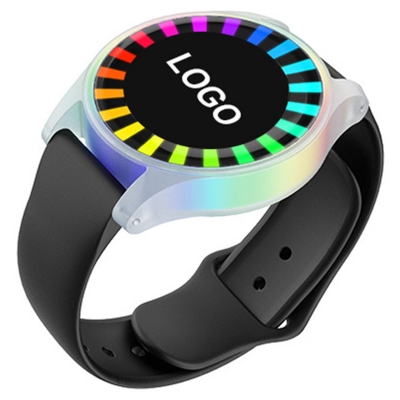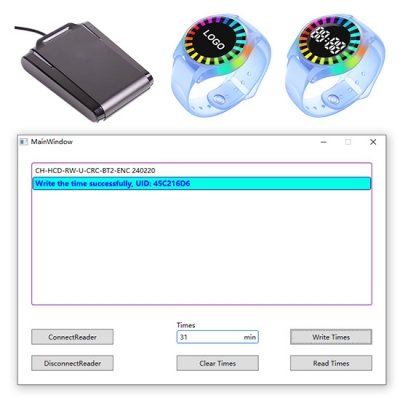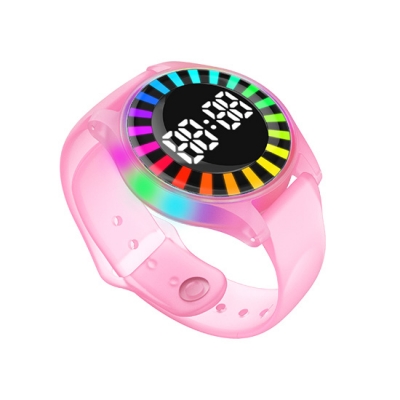Imagine uma cena em um hospital: médicos, enfermeiros e equipamentos médicos circulam entre as enfermarias. Esse enorme sistema precisa operar com eficiência e precisão para garantir a segurança das pessoas. Na sociedade moderna, existe uma "mão invisível" — a RFID — que garante que cada etapa do sistema operacional do hospital seja registrada com precisão.
Vamos dar uma olhada em como diferentes tecnologias RFID são aplicadas em áreas-chave dos hospitais.
1. Gestão de pacientes: pulseiras de pacientes (RFID de alta frequência)
Confusão na identidade dos pacientes, admissões de emergência movimentadas e a correspondência correta entre mães e recém-nascidos são enormes desafios. Mesmo o menor erro pode ter consequências graves. A tecnologia RFID oferece uma solução eficaz: pulseiras para pacientes.
Admissão de pacientes: Após o paciente colocar a pulseira, suas informações podem ser associadas em segundos, reduzindo o tempo de registro e erros.
Monitoramento "cinco-preciso": Após o enfermeiro escanear a pulseira do paciente, o sistema confirma imediatamente o paciente, o medicamento, a dosagem, a via de administração e o horário corretos.
Conexão mãe-bebê: Mães e bebês usam pulseiras de alta frequência correspondentes para estabelecer uma conexão digital segura e evitar confusões.
Proteja os pacientes: Para pacientes com demência ou crianças pequenas, a pulseira pode disparar um alarme quando eles entram por engano em uma área perigosa.
Existem muitos tipos de pulseiras para pacientes no mercado, e a pulseiras de identificação de pacientes Produzidas pela Meihe, estão entre as melhores. Feitas de materiais macios e duráveis, essas pulseiras priorizam o conforto e não rasgam nem causam desconforto, mesmo em uso prolongado. Suas características intransferíveis e à prova de violação garantem a segurança dos pacientes.
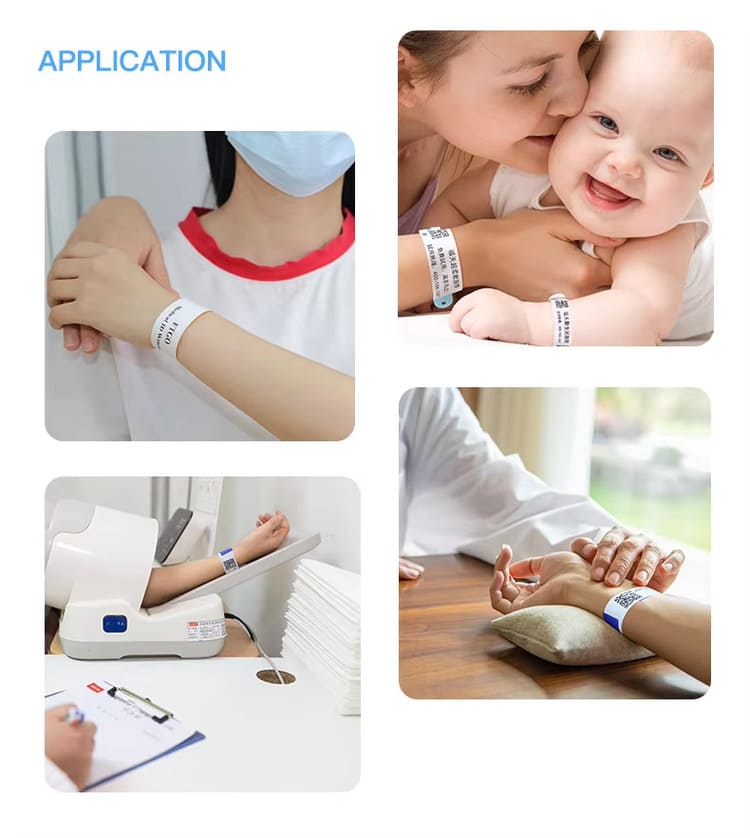
2. Gerenciamento de equipamentos: Etiquetas ABS RFID (UHF RFID)
Se a pulseira do paciente (HF RFID) for um "aperto de mão" preciso, então outro produto RFID, Etiquetas RFID ABS (UHF RFID), pode atingir "presença" para cada dispositivo.
Localização em tempo real (RTLS): Ao posicionar o leitor no local correto, o hospital se torna um mapa em tempo real. A equipe pode encontrar instantaneamente o equipamento disponível mais próximo por meio de um computador ou tablet.
Inventário rápido: A equipe pode simplesmente caminhar pelo corredor com um leitor de ultra-alta frequência (UHF) para contar todos os itens marcados na sala sem olhar.
Melhore a utilização: Monitore a frequência de uso do equipamento, identifique ativos subutilizados e ajude a tomar decisões inteligentes de planejamento e aquisição.
Manutenção de equipamentos: As etiquetas RFID podem armazenar dados como a última data de manutenção e marcar automaticamente os equipamentos que precisam de manutenção para evitar falhas inesperadas.
De Meihe Etiquetas RFID ABS anti-metal UHF Utilizam invólucros de ABS e encapsulamento interno de resina. São resistentes à corrosão, termicamente estáveis, à prova d'água e antimagnéticos, o que pode aumentar a durabilidade e a confiabilidade dos componentes. Ao mesmo tempo, apresentam excelente e estável desempenho de identificação e um alcance de leitura de até 8 metros.
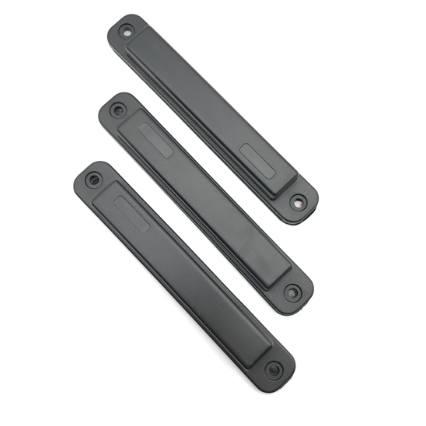
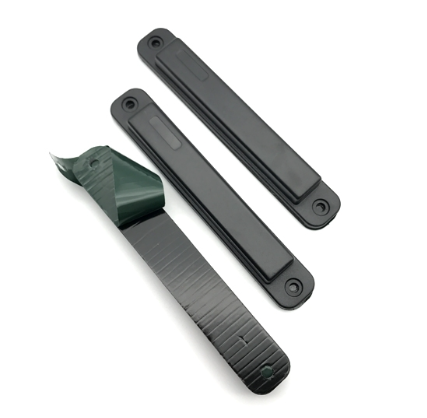
3. Gestão de medicamentos e dispositivos médicos: soluções RFID híbridas
Medicamentos vencidos, implantes cirúrgicos ou escassez de materiais essenciais podem ter consequências sérias.
A estratégia RFID híbrida resolve inteligentemente os problemas acima:
Para produtos a granel: Etiquetas RFID UHF em caixas e paletes podem verificar rapidamente o recebimento e o envio.
Gestão de produto único: Etiquetas RFID de caixa única ajudam a gerenciar implantes cirúrgicos, medicamentos especiais e medicamentos controlados.
Armazéns inteligentes: Armários e prateleiras inteligentes com leitores RFID integrados podem rastrear itens removidos para reposição oportuna e marcar itens que estão prestes a expirar.
Precisão cirúrgica: Na sala de cirurgia, o RFID pode rastrear automaticamente instrumentos cirúrgicos e implantes, reduzindo o risco de itens perdidos.
Anti-falsificação: As etiquetas RFID em produtos farmacêuticos podem impedir efetivamente que medicamentos falsificados e de qualidade inferior entrem na cadeia de suprimentos.
Meihe lançou um Etiqueta RFID Muito adequado para uso nos cenários acima. Essas etiquetas são equipadas com trava de mola e não podem ser removidas após o uso, facilitando a identificação de cada paciente pela equipe do hospital e a organização correta dos planos de tratamento. Esta pulseira tem tamanho ajustável e não precisa ser personalizada de acordo com diferentes faixas etárias, adaptando-se ao tamanho do pulso da maioria das pessoas.
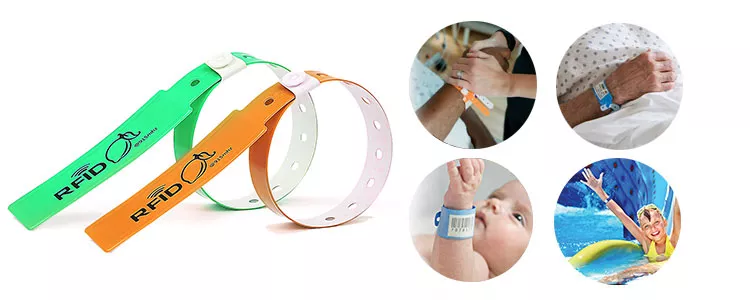
Ao escolher a frequência operacional correta — alta frequência (HF) para atendimento personalizado ao paciente, ultra-alta frequência (UHF) para gerenciamento de ativos e uma abordagem híbrida para cadeias de suprimentos complexas — a RFID está ajudando os hospitais a criar ambientes de saúde mais seguros e eficientes para todos.











